The study of elements is a cornerstone of chemistry, providing students with foundational knowledge about the building blocks of matter. Teaching students about elements and their arrangement is essential for their scientific literacy. However, memorizing elements and their symbols can be a daunting task.
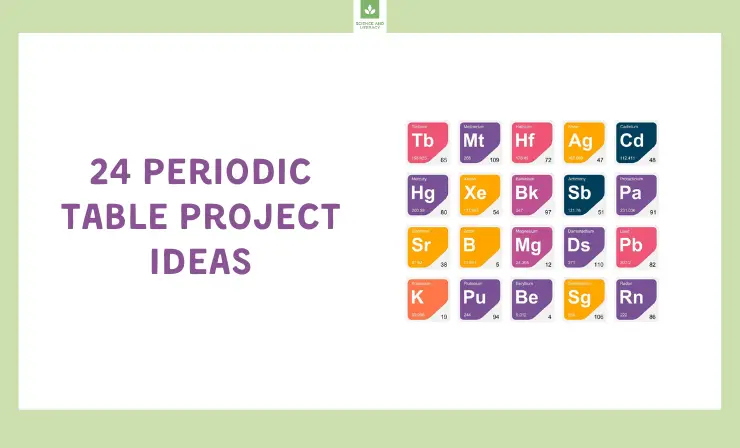
To transform this traditionally challenging topic into an engaging journey, we’ve compiled 24 creative project ideas that infuse fun into the learning process. These activities range from hands-on projects to digital games, tapping into students’ creativity, critical thinking, and problem-solving skills. With these projects, students will not only learn about atomic numbers and symbols but also understand the interactions and significance of various substances.
From creating element cards and engaging in lively debates to designing infographics and playing strategic games, each project offers a unique approach to learning about the chemical world. Some of these activities, like building a giant table or constructing Bohr diagrams, appeal to visual and hands-on learners, helping them see patterns and relationships.
Me when I can memorize every character from Love Live Bandori and Project Sekai’s name but can barely remember 20 elements on the periodic table https://t.co/NwJaqpbsK1
— Brendan (@deIusionz_) April 14, 2024
Others, like comic strips and songs, harness students’ imaginative storytelling to illustrate scientific concepts. The competitive nature of games like Bingo and Jeopardy brings a dynamic energy that reinforces memorization and teamwork.
Whether you’re a teacher looking to enliven your chemistry curriculum or a student eager to grasp these scientific principles, these projects will transform the learning environment into an exploratory lab where creativity and collaboration thrive. With these varied approaches, students will develop a comprehensive understanding of elements, their properties, and their practical applications.
Here’s a table summarizing 24 creative periodic table project ideas, offering unique and engaging ways for students to learn about elements through games, debates, and artistic activities that make chemistry fun and memorable.
| Experiment | Difficulty level | Cost | Description |
| 1. Point and Click | Easy | Free (Online Resource) | An interactive online periodic table allows students to explore elements and test their knowledge through games. |
| 2. Build an Atom | Easy | Free (Online Resource) | In this digital game, students build atoms by arranging protons, neutrons, and electrons. |
| 3. Symbol Matching Game | Easy | Free (Online Resource) | Students pair element symbols with their names in this matching game that aids memorization. |
| 4. Create Element Cards | Easy | Low ($1 to $5) | Students make colorful cards containing essential information about each element, turning them into study aids or memory games. |
| 5. Show and Tell | Easy | Low ($1 to $5) | Students bring everyday items containing various elements and share their uses and properties with the class. |
| 6. Periodic Table Puns and Words | Easy | Low ($1 to $5) | Students solve and create puns or words using element names and symbols for a fun mental challenge. |
| 7. Bingo | Easy | Middle ($5 to $10) | Students play a Bingo-style game where they identify elements by name, symbol, or property. |
| 8. Atoms Cornell Doodle Notes | Easy | Middle ($5 to $10) | Creative doodle notes introduce students to atomic structure and periodic table basics through engaging visuals. |
| 9. Periodic Table Jeopardy | Moderate | Free (Online Resource) | Teams compete in a Jeopardy-style quiz game answering questions about atomic numbers, symbols, and groups. |
| 10. The Periodic Table Game | Moderate | Free (Online Resource) | Students identify elements by symbol, number, or property in this educational game to place them correctly on a virtual table. |
| 11. Alien Periodic Table | Moderate | Free (Online Resource) | Students organize an alien periodic table using extraterrestrial data to compare with Earth’s periodic table. |
| 12. Battleship | Moderate | Low ($1 to $5) | A Battleship-style game using the periodic table helps students learn element locations, groups, and properties. |
| 13. Periodic Table War | Moderate | Low ($1 to $5) | Students use a periodic table-themed card game to practice comparing elements’ properties and calculating atomic components. |
| 14. Debate | Moderate | Low ($1 to $5) | Students defend their assigned element through detailed arguments, opening statements, and rebuttals in a debate format. |
| 15. Quiz Show | Moderate | Low ($1 to $5) | In this quiz show, teams answer questions about symbols, atomic numbers, and properties for a lively review of the periodic table. |
| 16. Larger Than Life Table | Moderate | Middle ($5 to $10) | Students decorate boxes representing individual elements to build a giant periodic table display. |
| 17. Element Heroes | Moderate | Middle ($5 to $10) | Students design superhero characters based on elements, using their properties to inspire unique powers. |
| 18. Bohr Diagram Manipulatives Activity | Moderate | Middle ($5 to $10) | Students use manipulatives to arrange Bohr diagrams, observing patterns in valence electrons and energy levels. |
| 19. Element Songs, Poems, Stories, or Art | Moderate | Middle ($5 to $10) | Students creatively compose songs, poems, or artwork to illustrate the properties and uses of elements. |
| 20. Escape Room | Moderate | Middle ($5 to $10) | Students solve puzzles related to the periodic table to “escape” the room while reinforcing knowledge of atomic structure. |
| 21. Element Comic Strip | Moderate | Middle ($5 to $10) | Students create comic strips featuring elemental characters and stories to illustrate their properties and uses. |
| 22. Element Infographics | Moderate | Middle ($5 to $10) | Students design visually appealing infographics that convey scientific information about elements’ properties and history. |
| 23. Collaborative Periodic Tables | Moderate | High ($10 to $20) | Students create a large periodic table display by designing tiles representing each element’s characteristics. |
| 24. Metals, Non-Metals, and Metalloids Lab | Moderate | High ($10 to $20) | An observation lab where students analyze pure element samples and classify them based on physical and chemical properties. |
Dive into the detailed descriptions of each idea to discover how these 24 engaging projects can enrich your classroom, making the exploration of elements both educational and enjoyable for your students.
1. Point and Click
This interactive periodic table allows students to explore all elements by scrolling over the table and clicking on individual elements to learn detailed information. There’s also a game mode where students identify as many elements by their abbreviations as possible within two minutes.
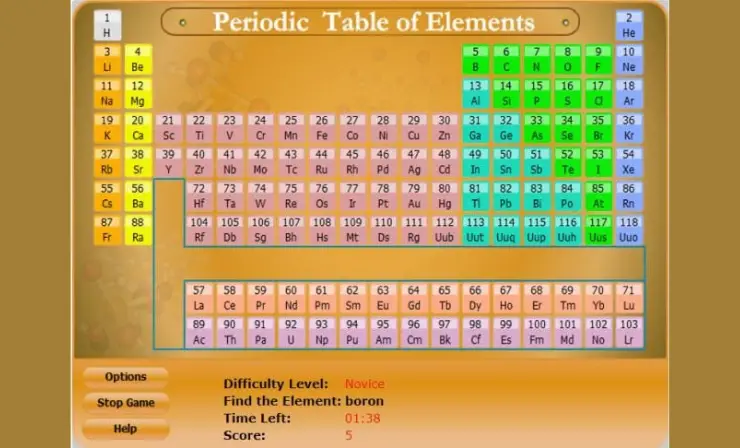
Difficulty Level: Easy
Cost: Free (Online Resource)
Materials
- Computer or tablet with internet access
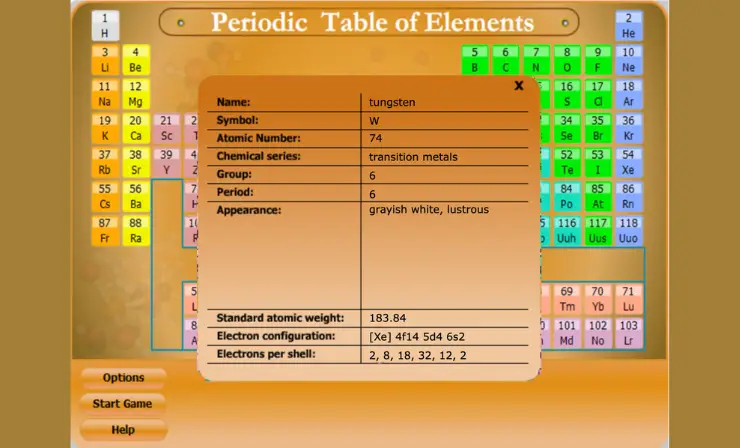
Steps
- Access the interactive periodic table online.
- Scroll over the table to see information about each element.
- In game mode, identify as many elements as possible based on their abbreviations within the time limit.
What It Teaches
This interactive periodic table helps students engage with chemistry concepts by visualizing the entire table and its elements. They develop recognition skills and enhance their ability to recall abbreviations and essential facts under time constraints. The activity also lets students practice at different skill levels, providing an adaptive learning environment.
2. Build an Atom
In this interactive computer game, students drag and drop protons, neutrons, and electrons to construct an atom. They learn about mass numbers and net charges while exploring different atomic structures. The activity helps students understand the chemical composition of elements, enhancing their comprehension of atomic structure through a fun, hands-on digital experience.
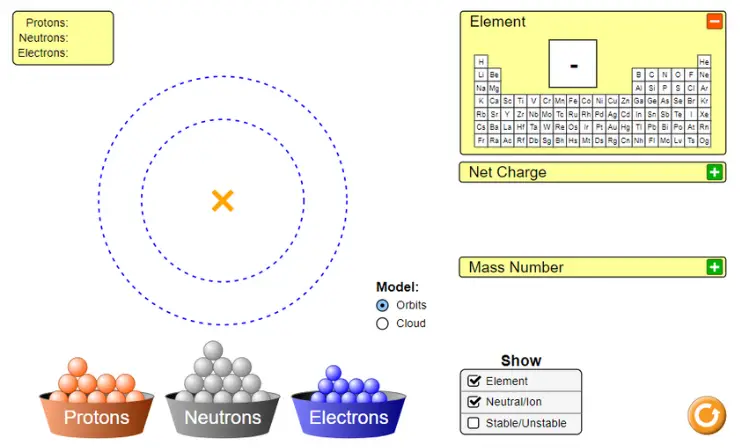
Difficulty Level: Easy
Cost: Free (Online Resource)
Materials
- Computer or tablet with internet access
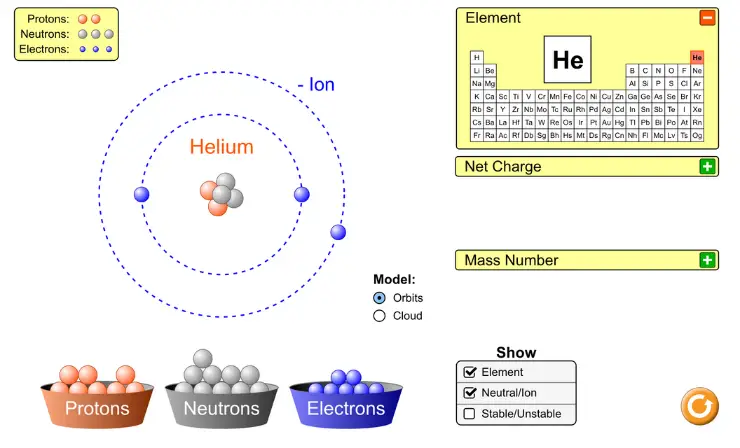
Steps
- Access the interactive game online.
- Drag and drop protons, neutrons, and electrons to form an atom.
- Check the atom’s mass number and net charge.
- Adjust subatomic particles to reach the desired element.
What It Teaches
This game teaches students how protons, neutrons, and electrons determine an atom’s identity. They learn how subatomic particles affect atomic structure, chemical properties, and stability, developing a deeper understanding of atomic composition.
3. Symbol Matching Game
In this game, students match each element’s symbol with its correct name, using a given list to pair them accurately. This activity enhances memorization and understanding of elemental symbols, helping students familiarize themselves with the table in an engaging way. The matching process ensures they develop a deeper grasp of the organization and classification of the elements.
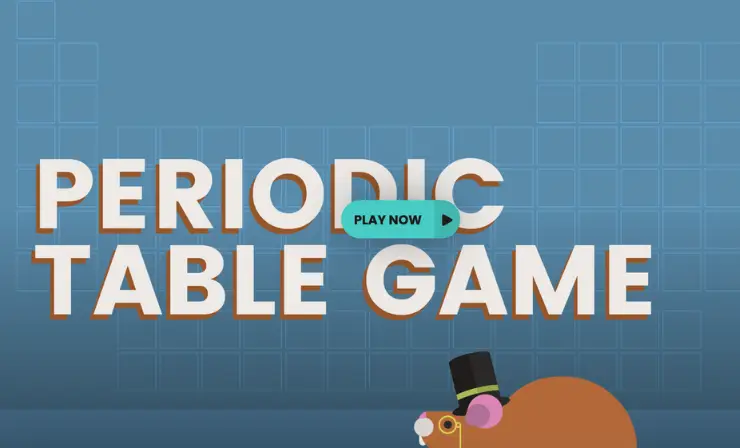
Difficulty Level: Easy
Cost: Free (Online Resource)
Materials
- Computer or tablet with internet access
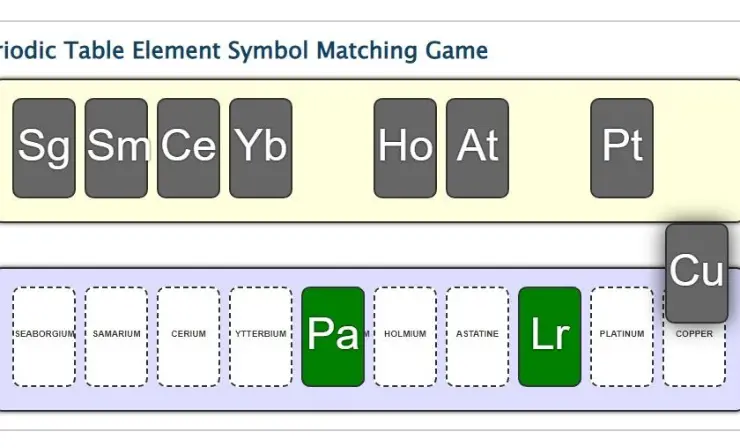
Steps
- Access the Symbol Matching Game online.
- Begin the game and view a list of element symbols.
- Match each symbol with the correct element name from the provided options.
- Check the results at the end of the round.
What It Teaches
The game enhances students’ ability to recognize and remember element symbols. It strengthens their understanding of the periodic table’s organization and classification. The engaging format motivates students to learn and retain elemental information.
4. Create Element Cards
Students craft colorful element cards, writing down key characteristics such as atomic number, weight, state at room temperature, and more. They use colored note cards or construction paper as the base and add printed information about each element. Once complete, these cards can be used for a memory game or as revision aids, reinforcing their understanding of each element’s properties.
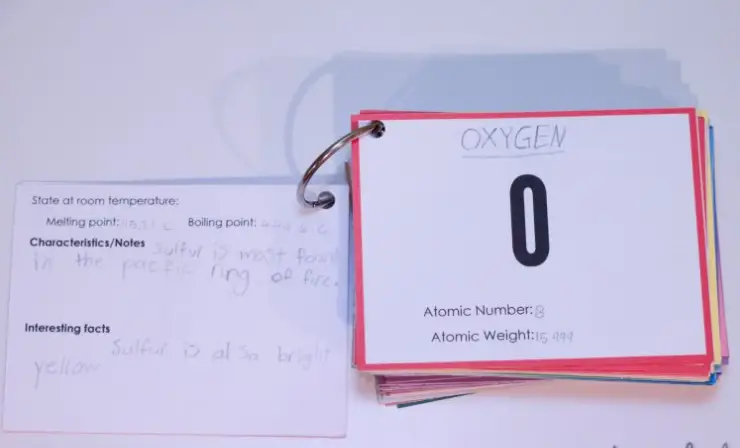
Difficulty Level: Easy
Cost: Low ($1 to $5)
Materials
- Colored note cards or construction paper
- Glue
- Scissors
- Elemental printables
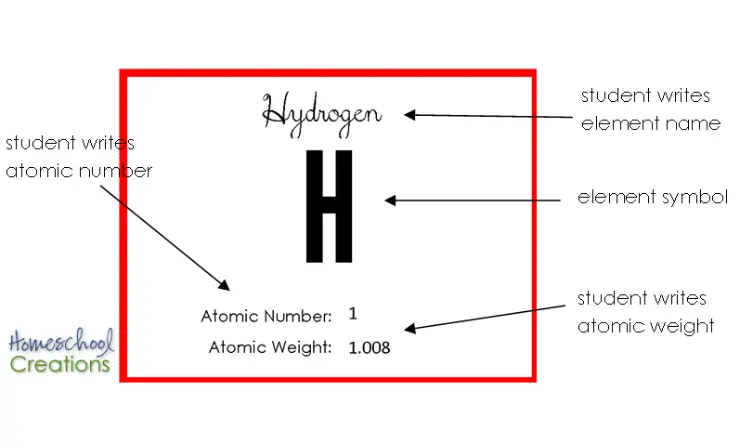
Steps
- Print or gather information about each element.
- Cut note cards or construction paper to the desired size.
- Glue each elemental printable onto a card.
- Write down the key characteristics of each element, like atomic number and weight.
- Use the cards for studying or a memory game.
What It Teaches
Creating element cards helps students organize and reinforce their understanding of the periodic table. Writing down essential details about each element, like their atomic weight, state, and notable characteristics, reinforces knowledge retention. By using the cards in memory games or study sessions, students actively engage with the material, improving their ability to recognize and differentiate between elements in a fun, collaborative way.
5. Show and Tell
In this scavenger hunt-like activity, students identify and collect household items that contain different elements, then present them to the class, explaining the elements within.
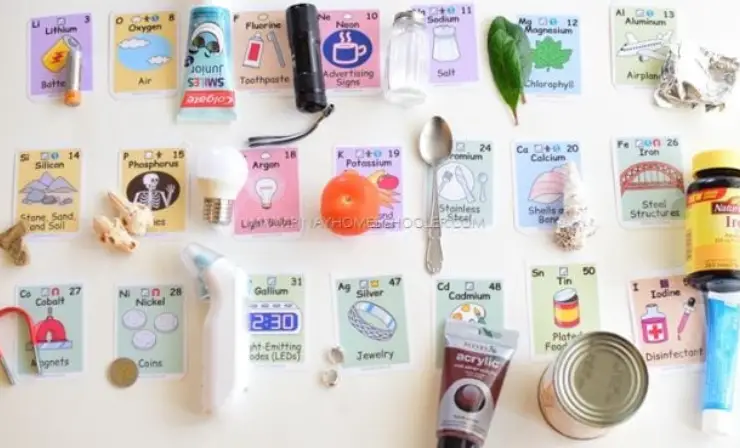
Difficulty Level: Easy
Cost: Low ($1 to $5)
Materials
- Common household items containing elements
- Presentation materials (optional)
Check out this video on the periodic table scavenger hunt game to discover what exciting elements you can find at home!
Steps
- Assign students a list of common elements to find at home.
- Have them bring objects containing these elements to class.
- Students present their findings, explaining the element each item contains and its everyday uses.
What It Teaches
This activity makes learning about elements relatable and practical by connecting them to everyday life. Students develop research skills, as they identify elements in common objects and explain their properties. By sharing their findings with classmates, they practice public speaking and communication, gaining confidence in their scientific knowledge.
6. Periodic Table Puns and Words
In this creative activity, students solve and create puns involving element names and symbols, filling in the blanks or forming words from periodic table symbols. This fun, mental workout helps them familiarize themselves with the table’s layout while challenging them to think critically and creatively, encouraging a better grasp of chemistry in a relaxed and engaging way.
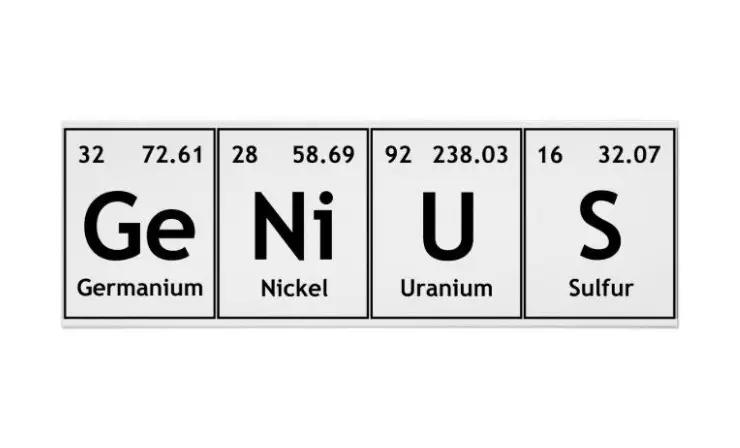
Difficulty Level: Easy
Cost: Low ($1 to $5)
Materials
- Periodic table reference
- Writing materials
Watch this video for some hilarious chemistry jokes that will have you laughing while you learn!
Steps
- Introduce students to a list of periodic table puns and their answers.
- Have them solve the puns using their periodic tables as references.
- Ask students to create their own puns and share them with classmates.
- Alternatively, have them form words using symbols from different elements.
What It Teaches
This activity makes learning element names and symbols enjoyable. Students practice problem-solving, improve their creativity, and get familiar with the periodic table’s layout while enjoying a mental workout.
7. Bingo
The Periodic Table Bingo game is a fun way to engage students while helping them remember the elements. Students listen as each element is called out and place tokens on their boards. They can share interesting facts about the elements, making it a collaborative yet competitive learning experience. The game includes visual elements for younger students and printable coloring pages inspired by the periodic table.
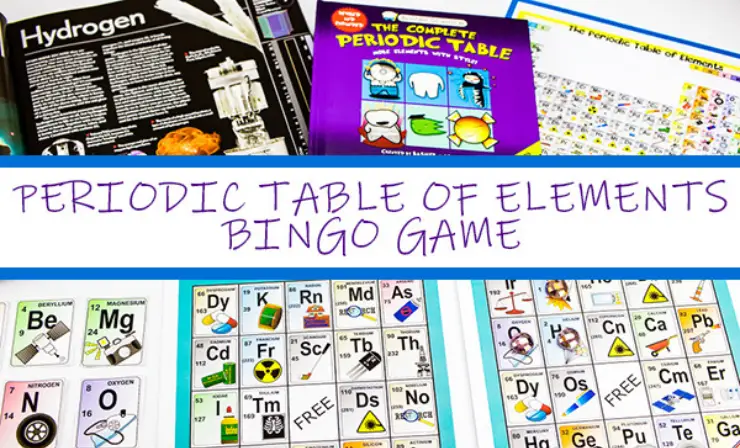
Difficulty Level: Easy
Cost: Middle ($5 to $10)
Materials
- Bingo boards
- Calling cards
- Tokens or dry-erase markers
- Card stock
- Laminator or protective sleeves
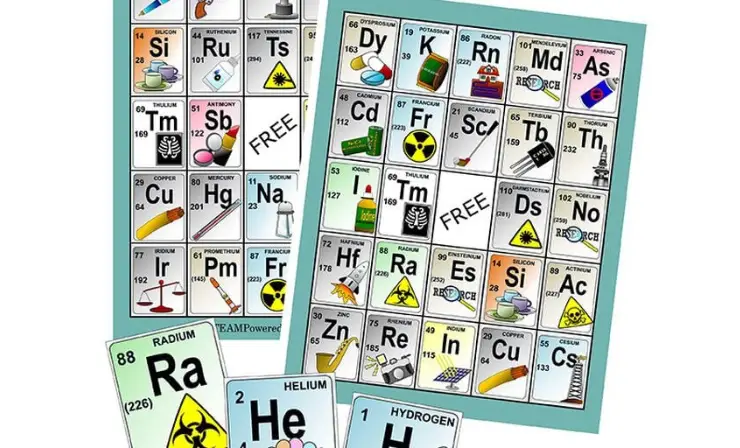
Steps
- Download and print the Bingo cards and calling cards.
- Laminate the cards or place them in protective sleeves.
- Call out the names or symbols of the elements, allowing students to mark them on their boards.
- Encourage students to share interesting facts about each called element.
- The first student to complete a Bingo pattern wins.
What It Teaches
Bingo reinforces students’ knowledge of element names and symbols, building familiarity with the periodic table. The interactive game encourages them to look up elements and their properties, leading to collaborative learning. By sharing facts, students develop research skills and practice articulating scientific information.
8. Atoms Cornell Doodle Notes
These Cornell Doodle Notes introduce students to atomic structure and subatomic particles while teaching them to read the periodic table. This creative, visual format covers the basic atomic structure in both hard-copy and digital formats. Students can complete the notes individually or as a group while learning about the essential components of each element in a way that blends artistic creativity with chemistry fundamentals.
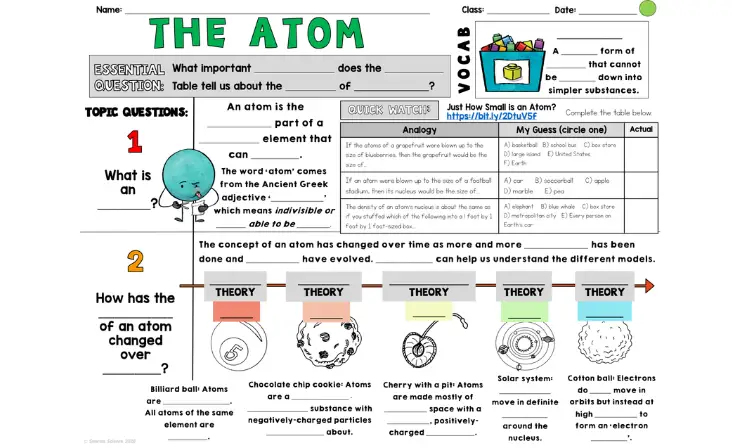
Difficulty Level: Easy
Cost: Middle ($5 to $10)
Materials
- Doodle notes templates
- Colored pencils or markers
- Presentation software (if digital)
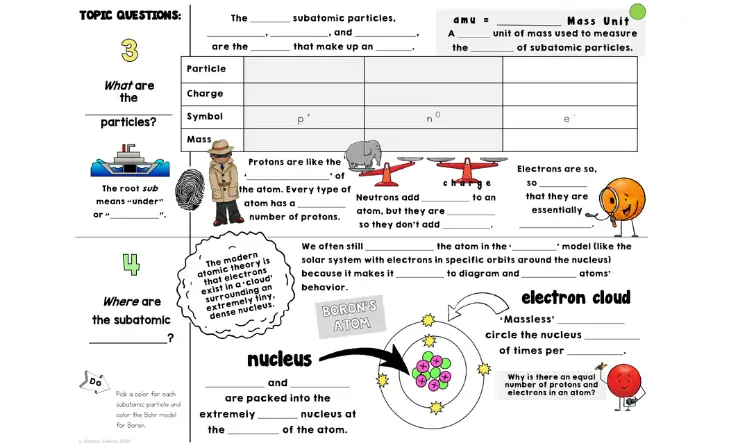
Steps
- Provide students with the Atoms Cornell Doodle Notes templates.
- Present the basic concepts of atomic structure and subatomic particles.
- Allow students to color and fill in the templates while learning about the periodic table.
- Use the presentation software for group or individual pacing.
What It Teaches
This activity provides a creative approach to understanding the structure of atoms and how to interpret information on the periodic table. It engages students visually, helping them build foundational chemistry knowledge while encouraging individual pacing or collaborative work.
9. Periodic Table Jeopardy
Students compete in a Jeopardy-style game, answering questions about atomic numbers, symbols, and element groups. They work in teams to test their knowledge of chemistry in a dynamic, interactive format that reinforces key concepts. This activity encourages collaboration and a competitive spirit, transforming classroom review into a lively and engaging learning session.
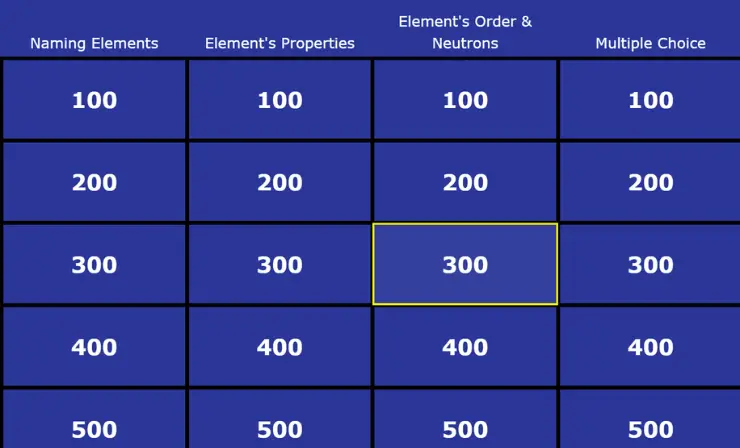
Difficulty Level: Moderate
Cost: Free (Online Resource)
Materials
- Computer or tablet with internet access
Don’t miss this video to see how students engage in a thrilling game of Periodic Table Jeopardy!
Steps
- Access the Periodic Table Jeopardy game online.
- Divide the class into teams and select a host to ask questions.
- Teams take turns choosing questions and answering them within the time limit.
- Award points for correct answers and keep a tally for each team.
What It Teaches
This game encourages students to recall information about the periodic table quickly, enhancing their recognition of atomic numbers, symbols, and groups. Working in teams fosters collaboration, and the competitive nature makes it exciting, reinforcing their understanding of periodic table concepts.
10. The Periodic Table Game
This interactive game helps students identify elements by their symbols, atomic numbers, and properties. Players place the elements in the correct spot on a virtual periodic table across various difficulty levels. This game allows students to grasp the relationships between elements and retain their knowledge in an engaging way.
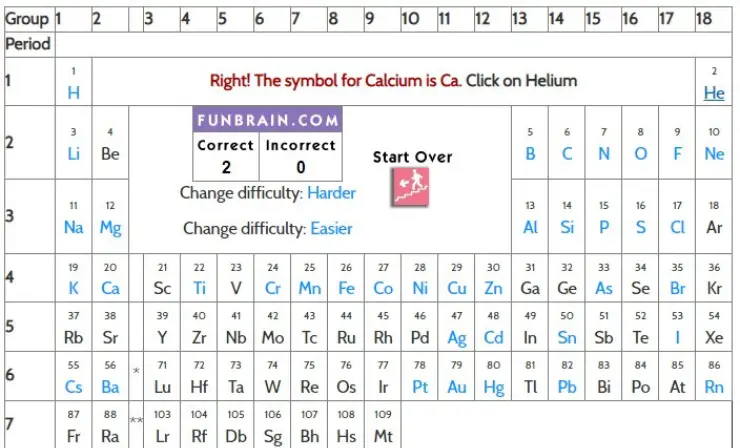
Difficulty Level: Moderate
Cost: Free (Online Resource)
Materials
- Computer or tablet with internet access
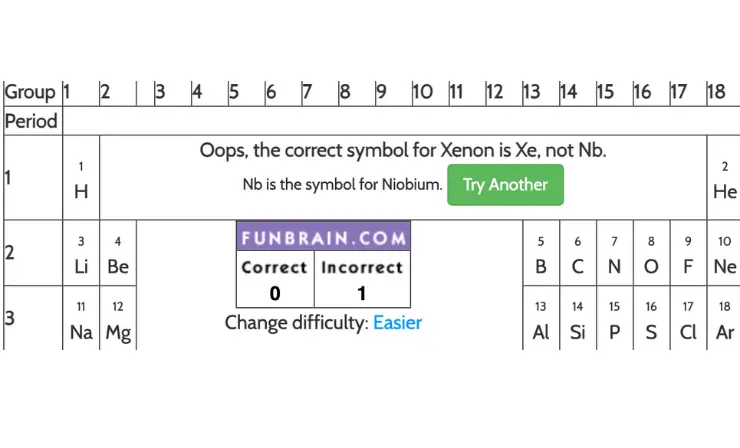
Steps
- Access the Periodic Table Game online.
- Choose a difficulty level or mode to begin.
- Identify the elements by their symbols or properties and place them on the correct spot in the virtual periodic table.
- Advance through different levels or settings.
What It Teaches
The game reinforces students’ understanding of elemental symbols, atomic numbers, weights, and properties, helping them grasp how elements are organized and classified. By placing elements correctly, students visualize and recall how different elements interact and are applied in real-world situations.
11. Alien Periodic Table
Students organize an alien periodic table by comparing extraterrestrial elements to Earth’s. With clues, background information, and a blank table, they arrange the alien data provided to recognize patterns. This digital activity encourages students to apply their understanding of chemical families, fostering deeper insight into the periodic trends and classification systems.
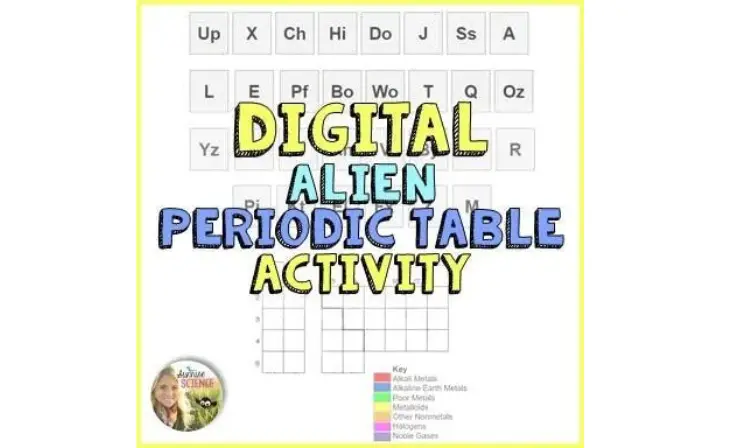
Difficulty Level: Moderate
Cost: Free (Online Resource)
Materials
- Computer or tablet
- Printable periodic table template
- Background information
- Alien periodic table squares
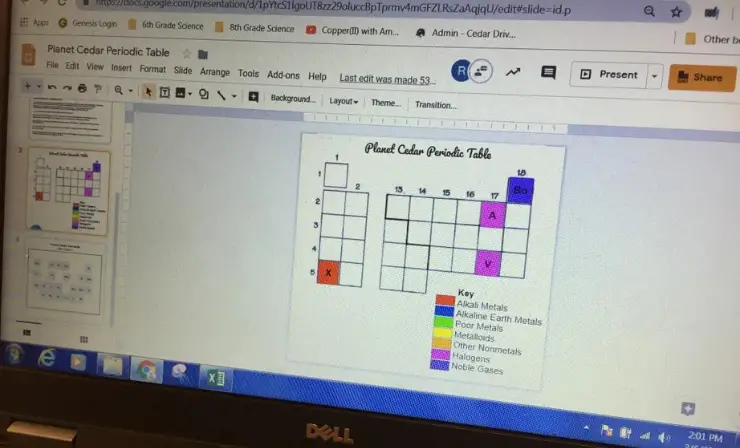
Steps
- Provide students with the background information, clues, and a blank periodic table.
- Have them arrange the alien elements on the periodic table using the clues.
- Color-code the alien table according to the family names.
- Discuss how the alien elements compare to Earth’s periodic table.
What It Teaches
This assessment-based activity measures students’ understanding of periodic table patterns and classification. Students compare the structure of Earth’s periodic table with the alien version, strengthening their knowledge of families and elemental properties.
12. Battleship
Students play a Battleship-style game using the periodic table to familiarize themselves with elements, symbols, and the table’s structure. In this engaging activity, they learn how elements are grouped and related while strategically calling out coordinates, symbols, or names to locate their opponent’s “ships.” This creative twist on the classic game builds recognition skills and provides a fun way to reinforce chemistry concepts.
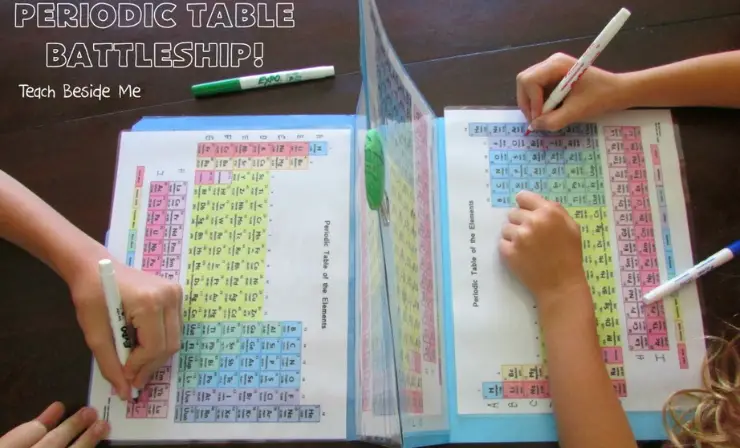
Difficulty Level: Moderate
Cost: Low ($1 to $5)
Materials
- Four printed periodic tables
- File folders
- Dry-erase markers
- Paper clip
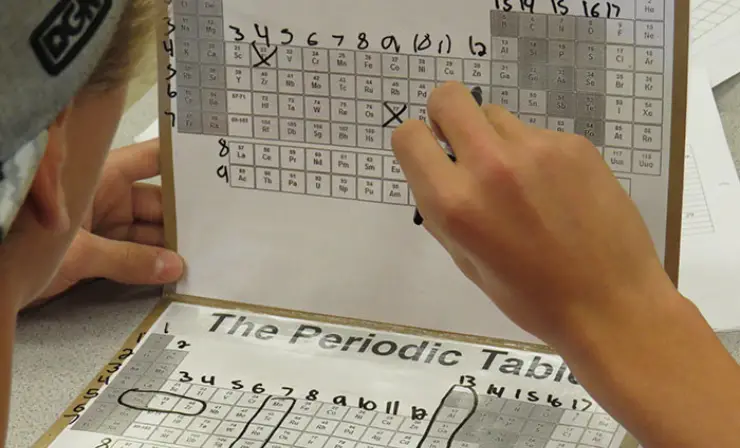
Steps
- Print out four copies of the periodic table.
- Label rows alphabetically along the left side for easier identification.
- Attach two tables to each file folder using a paper clip to create a stand.
- Use dry-erase markers to circle rows representing “ships” on the bottom table.
- Players call out coordinates, symbols, or names to locate ships on the opponent’s table. Mark hits and misses with an ‘X’ or circle.
What It Teaches
This activity helps students recognize the periodic table’s structure, including elemental groups and characteristics. They become familiar with atomic numbers, weights, and symbols while developing strategic thinking and problem-solving skills. The competitive game format makes learning engaging and fun, encouraging students to revisit concepts repeatedly.
13. Periodic Table War
Adapted from the classic card game “War,” this version focuses on chemical elements. Players practice reading the periodic table and calculating protons, electrons, and neutrons. A six-sided die determines the rules for each round, making the game adaptable for different skill levels.
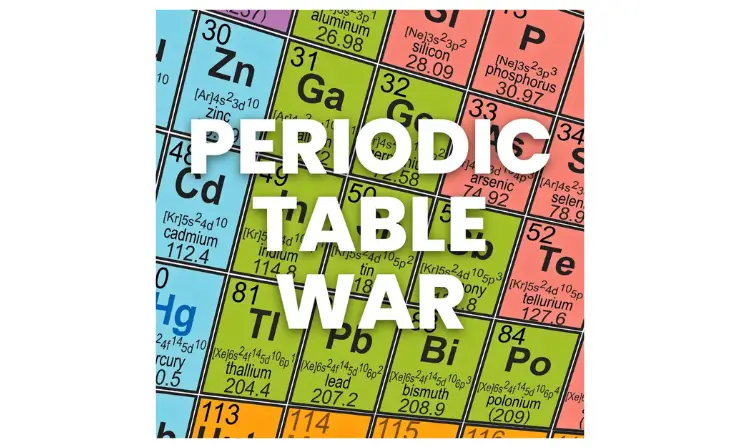
Difficulty Level: Moderate
Cost: Low ($1 to $5)
Materials
- Printed element cards
- Six-sided die
- Interactive notebooks
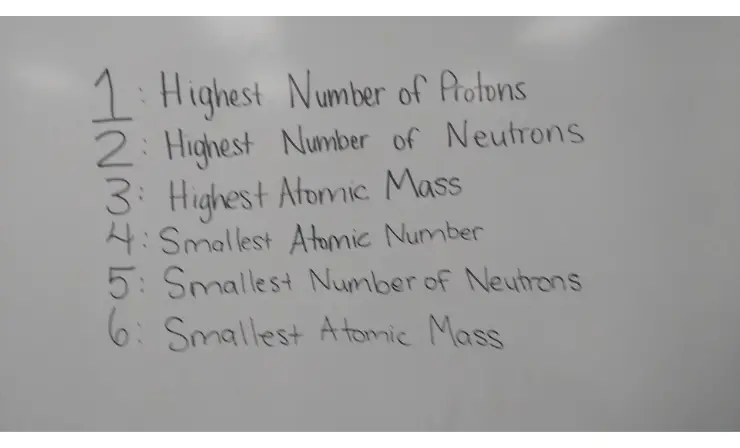
Steps
- Create or print a deck of periodic table cards featuring only chemical symbols.
- Determine the skills to practice, such as calculating protons, electrons, and neutrons or comparing atomic properties.
- Roll the die to decide the rule for each round.
- Play by flipping cards and comparing elements based on the current rule.
- Award the winning player the other players’ cards.
- Repeat rounds until the timer ends or a player has most of the cards.
What It Teaches
This game helps students develop calculation skills, strengthens periodic table reading abilities, and reinforces knowledge of elemental properties. The competitive nature makes it engaging, while the die introduces randomness to encourage practice with different skills.
14. Debate
Students debate the importance and uses of different elements, presenting opening statements, detailed arguments, and rebuttals to defend their assigned element. This lively activity enhances research, public speaking, and critical thinking skills, helping students explore elemental properties and applications while learning to organize their thoughts into compelling, logical arguments.
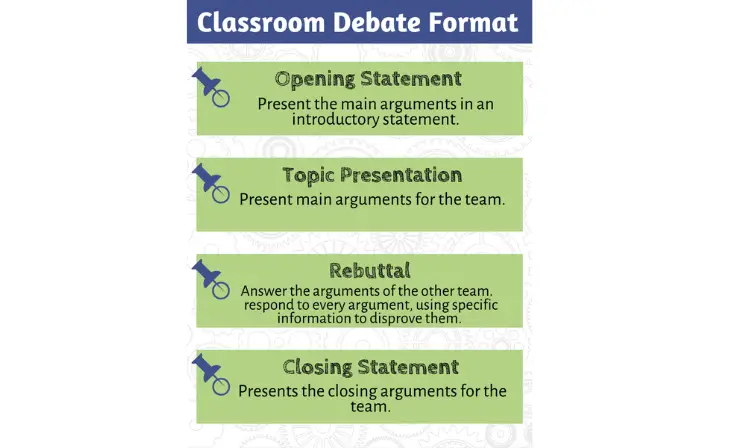
Difficulty Level: Moderate
Cost: Low ($1 to $5)
Materials
- Research resources (books, internet)
- Note cards
- Timer
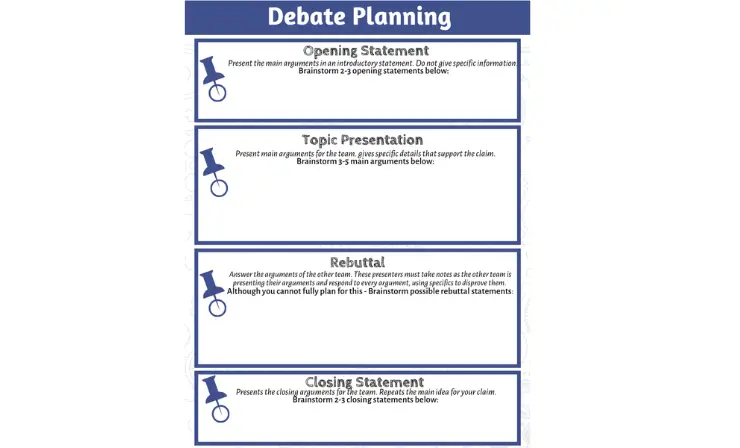
Steps
- Assign an element to each student and provide time to research its properties and uses.
- Outline the debate format: opening statement, topic presentations, rebuttals, and closing statements.
- Have students prepare their arguments, starting with an impactful opening.
- Present the arguments, rebuttals, and closing statements in turn.
- Conclude by summarizing the debate and awarding points.
What It Teaches
Debating helps students develop public speaking and research skills while deepening their understanding of elemental properties. They practice formulating logical arguments, listening actively, and thinking critically to counter opposing viewpoints.
15. Quiz Show
In this lively quiz show, students answer questions on symbols, atomic numbers, and properties, working in teams to win. They write their own questions to personalize the game and engage their classmates. This activity fosters friendly competition while reinforcing key concepts, making it an interactive and entertaining way to review chemistry material.

Difficulty Level: Moderate
Cost: Low ($1 to $5)
Materials
- Research resources
- Question cards
- Timer
- Buzzer (optional)
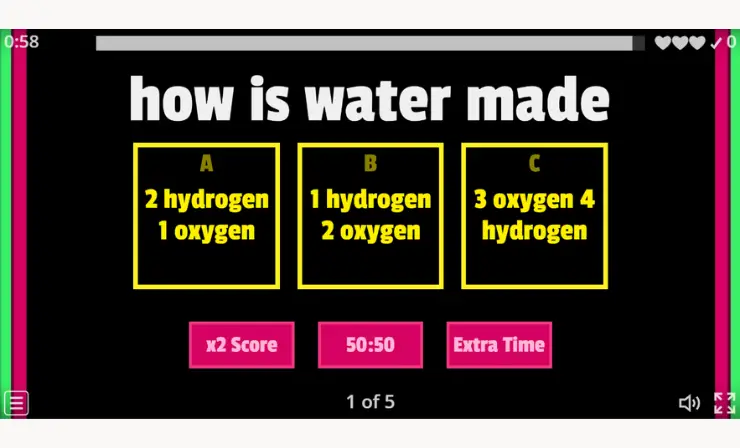
Steps
- Have each student write a question related to the periodic table.
- Organize the questions into categories for the quiz show.
- Divide students into teams, appoint a host, and start the game.
- Teams take turns answering questions within a set time limit.
- Award points for correct answers and keep a tally for each team.
What It Teaches
The quiz show format reinforces students’ knowledge of symbols, atomic numbers, and element groups while encouraging collaboration and teamwork. Writing their own questions helps students think critically and retain information, making it a lively, competitive way to review concepts.
Check out our article to discover 11 teacher quiz makers that can help you create engaging and interactive learning experiences for your students.
16. Larger Than Life Table
Students research an assigned element and decorate a provided box to create a display representing that element. They use these decorated boxes, filled with images, facts, and relevant objects, to form a larger periodic table that the entire school can see. This collaborative project encourages creativity, teamwork, and a deeper understanding of elemental properties while providing an engaging way for students to share their knowledge.
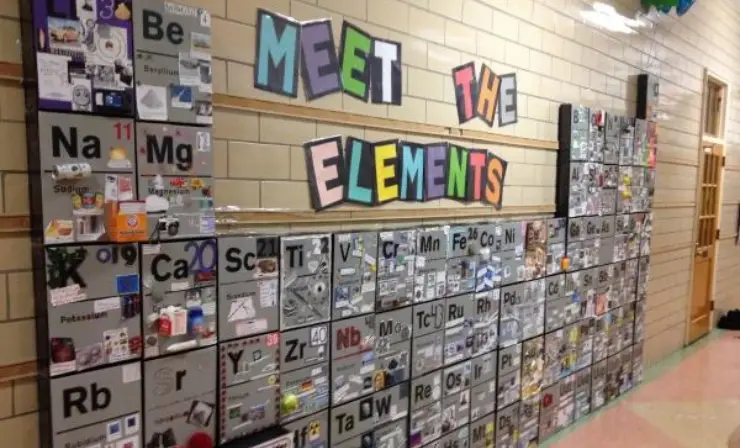
Difficulty Level: Moderate
Cost: Middle ($5 to $10)
Materials
- Cardboard box (preferably recycled pizza box)
- Glue stick
- Markers
- Double-sided tape
- Printed or drawn images
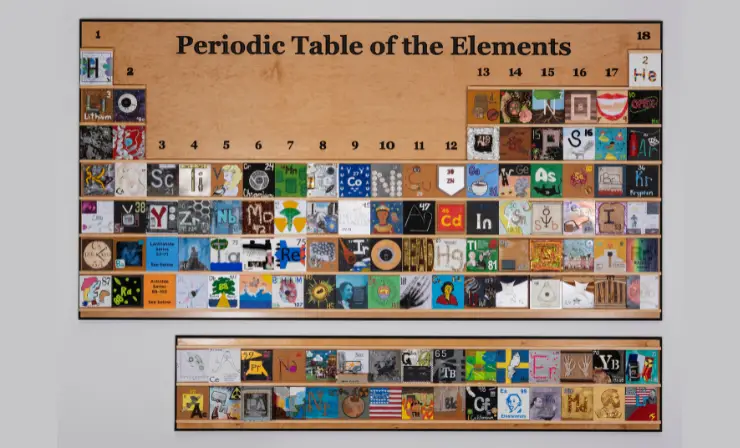
Steps
- Research an assigned element, gathering information and relevant images.
- Decorate the box neatly, ensuring the atomic number is prominently displayed in the top right corner.
- Attach images or objects representing the element’s practical uses and main characteristics.
- Write captions describing each image or object’s significance.
- Arrange the boxes together to form a giant periodic table.
What It Teaches
Creating a larger-than-life periodic table box display encourages students to delve into detailed research on their assigned element. They learn how to distinguish key characteristics and practical uses, presenting this information in a creative and organized way. By collaborating with classmates to build the giant periodic table, students also develop teamwork and presentation skills.
17. Element Heroes
Students design superhero characters based on the elements’ characteristics. Oxygen can be a beloved hero, while Uranium is the villain. This creative activity encourages students to delve deeper into each element’s properties and apply their imagination to develop characters that will help them remember key facts.
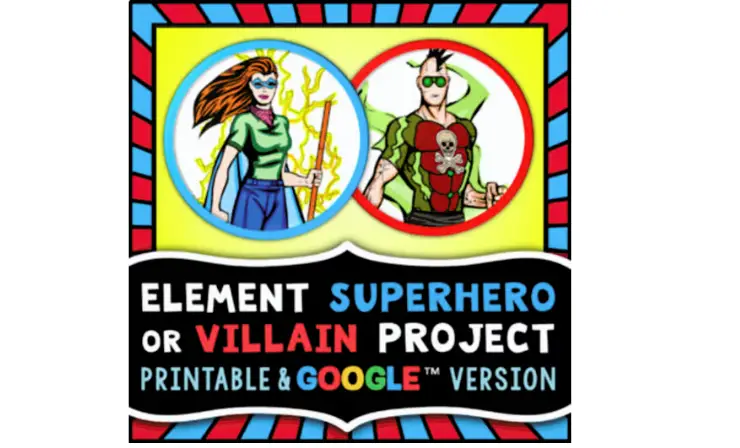
Difficulty Level: Moderate
Cost: Middle ($5 to $10)
Materials
- Paper
- Markers
- Colored pencils
- Research resources (books, internet)
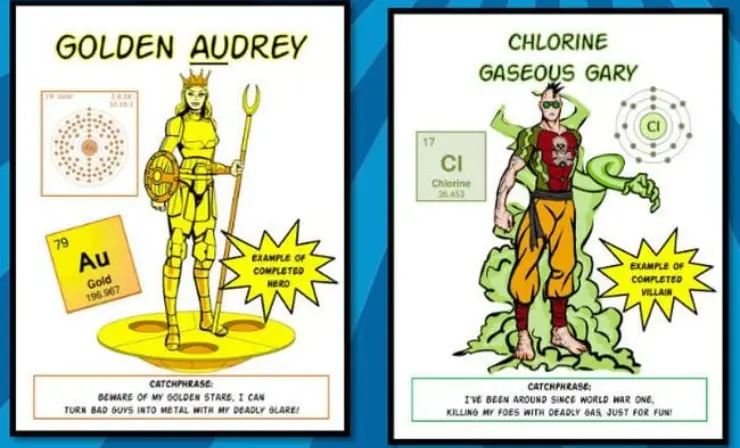
Steps
- Assign students different elements for their hero or villain characters.
- Have them research the characteristics, physical properties, and uses of the assigned element.
- Create characters that embody these properties, giving them a name, powers, and appearance.
- Allow students to share and present their characters, explaining how their attributes relate to the element.
What It Teaches
This activity fosters creativity and scientific understanding as students explore and connect elemental properties to unique characters. They develop research skills, enhancing their grasp of each element’s characteristics and uses. Presenting their characters also improves public speaking and storytelling abilities.
18. Bohr Diagram Manipulatives Activity
This activity allows students to construct a visual periodic table using Bohr diagrams for elements #1-20. By arranging atom diagrams, students identify patterns in valence electrons and energy levels. They will realize how the arrangement of protons, neutrons, and electrons relates to an element’s identity and its position in the periodic table.
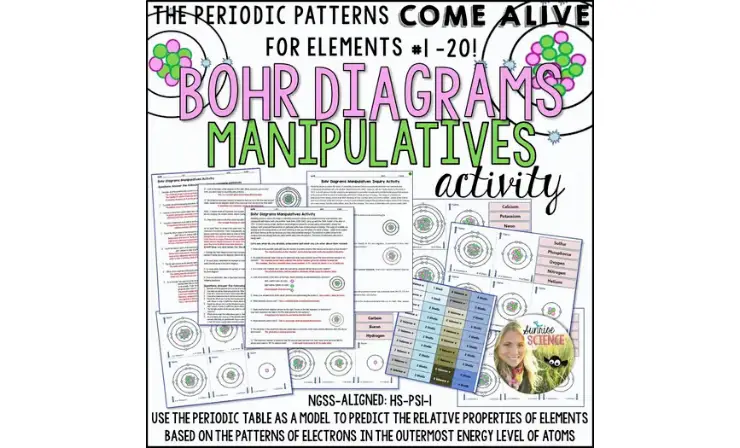
Difficulty Level: Moderate
Cost: Middle ($5 to $10)
Materials
- Manipulative atom diagrams (printable)
- Element names
- Valence electron cards
- Energy level cards
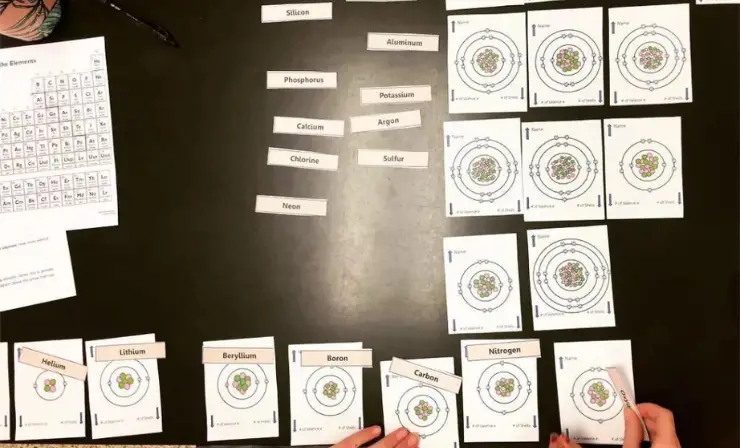
Steps
- Provide students with atom diagrams and corresponding element names for elements #1-20.
- Have them arrange the diagrams in the correct periodic table order.
- Add valence electron and energy level cards to their corresponding diagrams.
- Observe and discuss the patterns in electron shells and valence electrons across the table.
What It Teaches
This activity helps students understand the relationship between atomic structure and an element’s position on the periodic table. By observing patterns in electron shells and valence electrons, they grasp how elements are grouped and why their chemical behaviors are similar.
19 . Element Songs, Poems, Stories, or Art
Students explore elements creatively by composing songs, poems, or stories, or drawing related artwork. They perform their work or display their art to share their understanding of the elements. This project combines research, creativity, and public speaking, encouraging students to apply their knowledge in an imaginative and collaborative way while making the study of elements memorable.
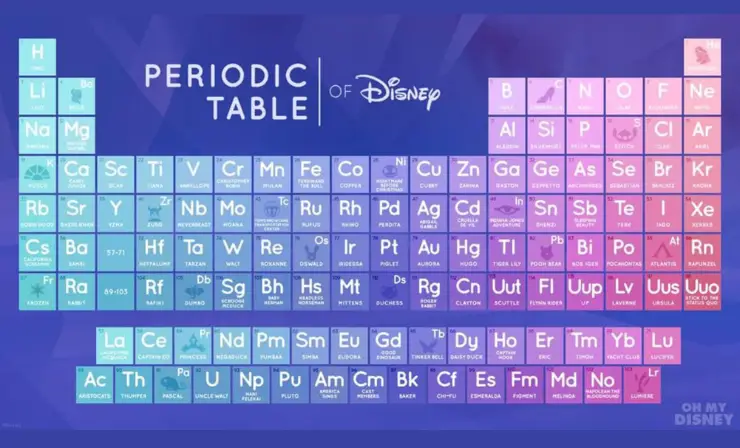
Difficulty Level: Moderate
Cost: Middle ($5 to $10)
Materials
- Writing and art supplies
- Digital camera (optional)
Check out this video to enjoy “The Periodic Table Song,” featuring the real elements in a catchy, educational tune!
Steps
- Assign students a creative project that incorporates facts about the periodic table.
- Provide guidelines on including factual chemistry information in their work.
- Have students compose or create their songs, poems, stories, or art.
- Allow them to share their work through performances or displays.
What It Teaches
This project enhances creativity while reinforcing factual knowledge of the periodic table. Students develop their research skills as they incorporate relevant chemistry facts into their work, while also improving their ability to communicate scientific information creatively.
20. Escape Room
In this escape room, students solve puzzles related to the periodic table to “escape” the room. The teacher can control which puzzles to use and the order, making this flexible for various class periods. The puzzles require understanding atomic structure, subatomic particles, and periodic table patterns.
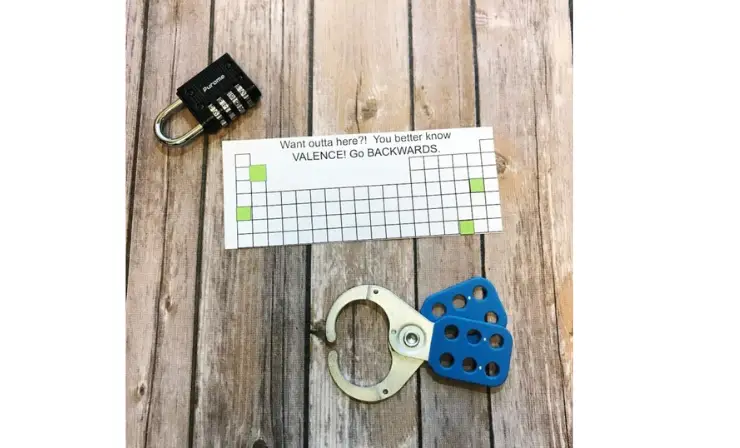
Difficulty Level: Moderate
Cost: Middle ($5 to $10)
Materials
- Printed puzzles
- Student copy of the periodic table
- Scrabble tiles (optional)
- Locks and lockout hasps (optional)
- Mirror or reflective surface
- Brads for decoder rings (optional)
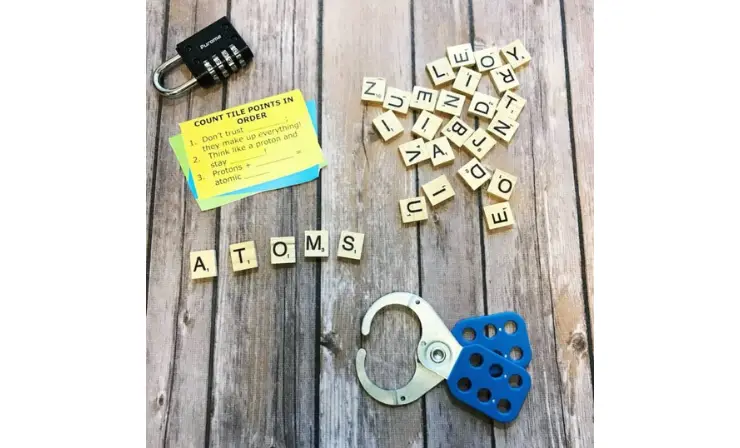
Steps
- Prepare printed puzzles and clues based on periodic table concepts.
- Distribute the materials to groups or individuals, depending on class size.
- Set a time limit for students to solve the puzzles and “escape.”
- Optionally, add locks or other props to enhance the experience.
What It Teaches
The escape room challenges students to use their understanding of the periodic table and atomic structure to solve puzzles quickly. It encourages teamwork, problem-solving, and critical thinking while reinforcing prior learning in an exciting and hands-on way.
21. Element Comic Strip
This activity encourages students to bring elements to life through storytelling. Students create comic strips with elemental characters, developing plots that showcase each element’s properties and uses. It transforms learning into an imaginative, visual experience.
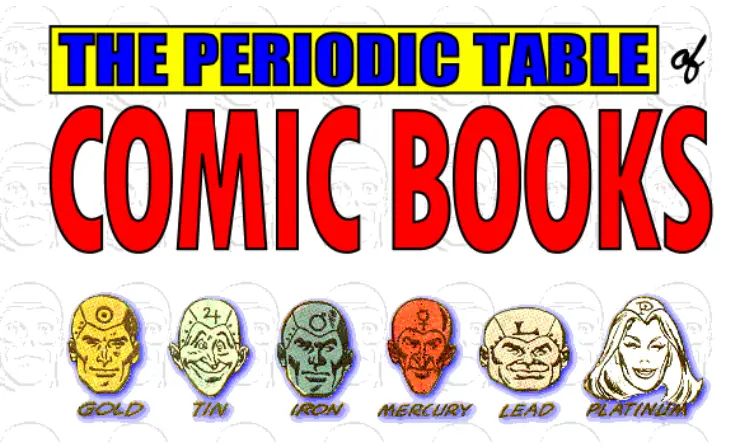
Difficulty Level: Moderate
Cost: Middle ($5 to $10)
Materials
- Paper
- Markers
- Colored pencils
- Digital tools (optional)
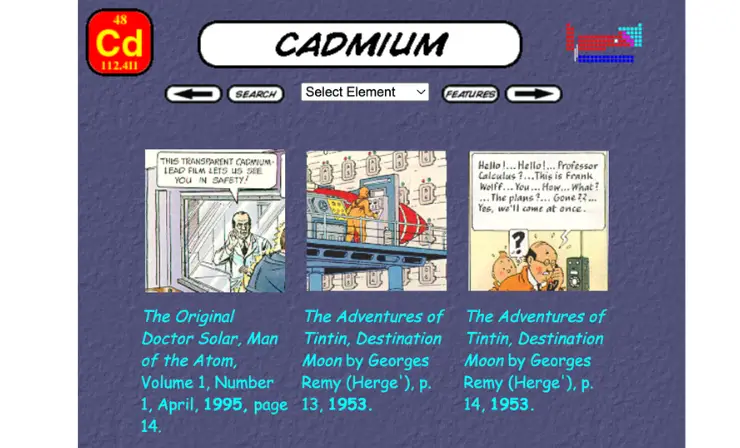
Steps
- Assign each student an element or let them choose one.
- Have them research the element’s properties and applications.
- Create a storyboard or script for the comic strip that tells a story highlighting the element’s traits.
- Draw or use digital tools to illustrate the comic strip.
- Share and display the finished comics.
What It Teaches
Creating comic strips helps students deepen their understanding of elemental properties and applications while enhancing creativity and storytelling skills. Students practice research, writing, and illustration, making complex scientific concepts more memorable.
22. Element Infographics
Students design visually appealing infographics that convey key scientific information about their assigned element, including its properties, uses, and history. The completed posters are displayed around the classroom or school to increase awareness. This project enhances their ability to research, organize, and visually present data, offering a creative yet informative way to learn about individual elements.
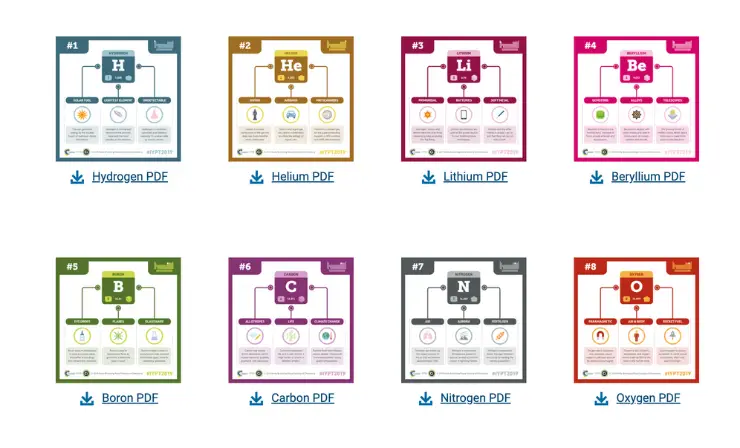
Difficulty Level: Moderate
Cost: Middle ($5 to $10)
Materials
- Posterboard
- Markers
- Colored pencils
- Digital tools (optional)
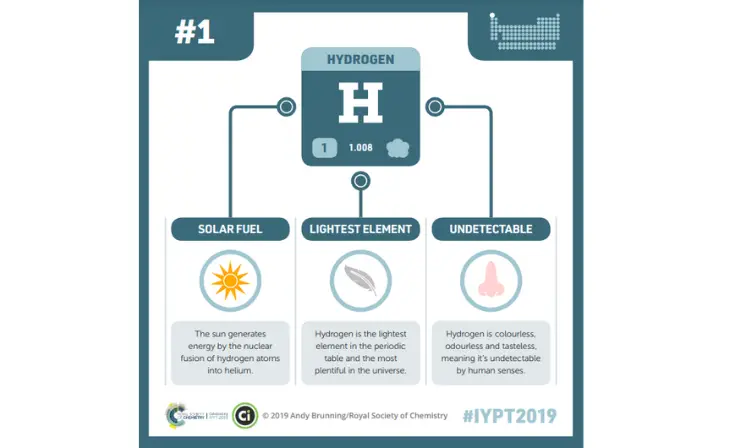
Steps
- Assign an element to each student or let them choose one.
- Have them research the element’s properties, history, and uses.
- Design an infographic that includes visuals and concise text to present the information.
- Draw or use digital tools to create the infographic.
- Display the completed posters around the classroom or school.
What It Teaches
Creating infographics allows students to organize and present scientific data effectively. They practice summarizing research into digestible information, enhancing their creative and visual communication skills while learning about elements.
23. Collaborative Periodic Tables
Students collaborate to build a giant periodic table using jewel cases. Each student designs a tile representing their element’s history, discovery, and uses. These individual tiles are then arranged together, creating a visually striking and informative periodic table display that showcases their understanding while fostering teamwork.
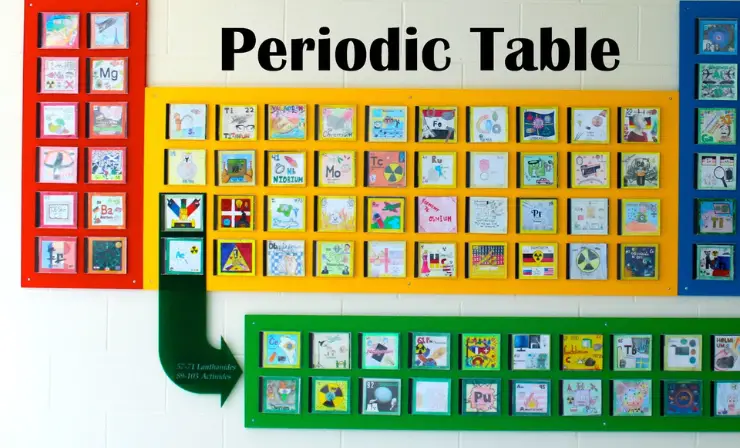
Difficulty Level: Moderate
Cost: High ($10 to $20)
Materials
- Jewel/CD cases
- Markers
- Paper
- Research materials
- Template for tiles
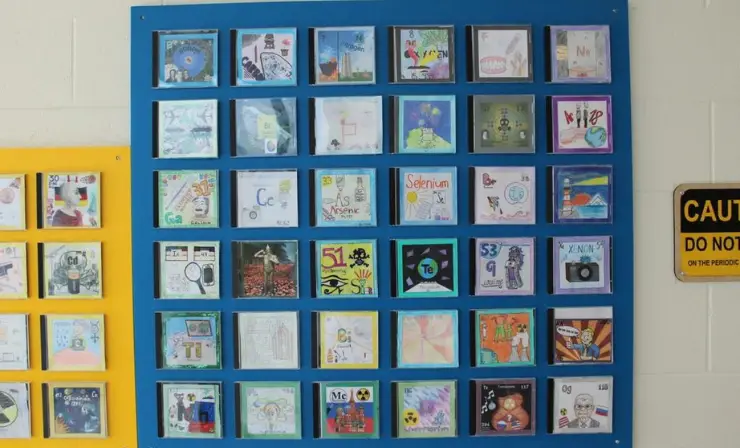
Steps
- Assign students an element to research and design a tile.
- Have them illustrate the element’s history, properties, and uses on the tile.
- Organize tiles by elemental families using color-coded borders.
- Arrange tiles together to construct the main display.
- Include additional signage and arrows to guide viewers through the exhibit.
What It Teaches
This collaborative project develops teamwork and communication skills as students work together to create a cohesive display. It enhances their understanding of elemental properties and periodic table organization, while also providing practice in research, artistic design, and presentation.
24. Metals, Non-Metals, and Metalloids Lab
In this observation lab, students classify pure elements based on their physical and chemical properties. They analyze samples to identify metals, non-metals, and metalloids, organizing them into groups. This inquiry-based experiment meets NGSS standards and helps students develop their observation, classification, and analytical skills while learning about the differences between these types of elements.
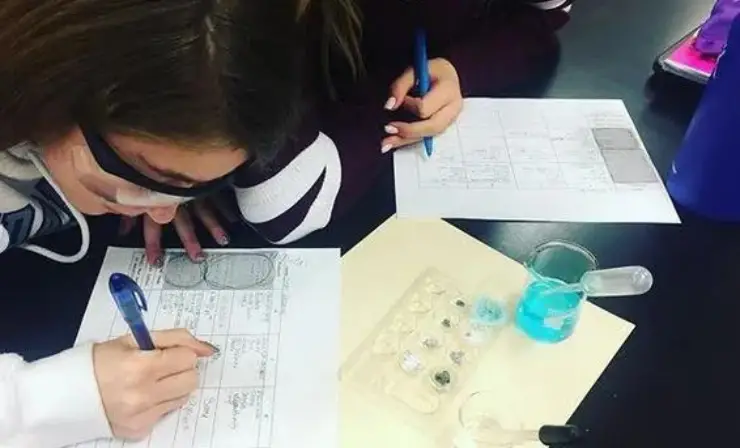
Difficulty Level: Moderate
Cost: High ($10 to $20)
Materials
Samples of elements like aluminum, carbon, copper, etc., hydrochloric acid solution, copper (II) chloride solution, nails, test tubes, conductivity apparatus, Chem plates
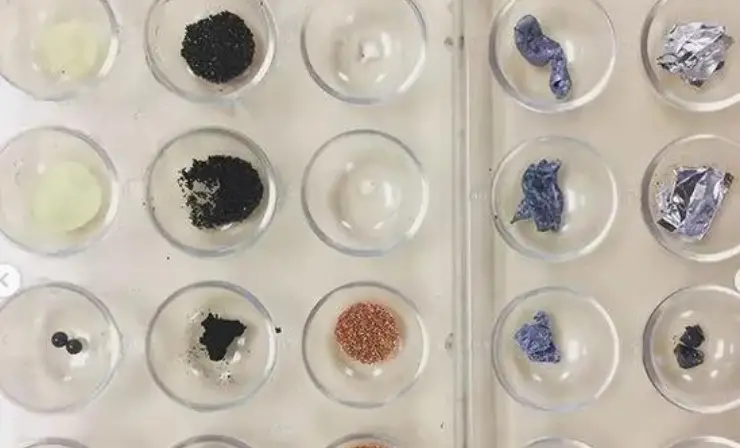
Steps
- Gather samples of various elements to analyze.
- Set up testing stations with solutions and apparatus for conductivity, reactivity, and other tests.
- Make observations about each element’s physical and chemical properties.
- Classify them as metals, non-metals, or metalloids based on the observations.
What It Teaches
The lab helps students develop skills in making scientific observations, understanding the periodic table’s classification, and grouping elements by their properties. It encourages critical thinking and hands-on experimentation.
If you’re looking for engaging educational content for middle schoolers, read this article featuring the 17 best TED Talks that offer a captivating way to learn more about the world around them.
Useful Resources
- Interactive Periodic Table of Elements
- How to Memorize the Periodic Table – Tips and Tricks
- Investigating the Periodic Table with Experiments
Final Thoughts
These 24 project ideas inspire a diverse range of activities that help students comprehend the intricate patterns and properties of elements. From artistic expressions to competitive games, these projects captivate learners and provide essential practice. Through creative exploration, teamwork, and logical thinking, students can gain a deeper understanding and appreciation of the world of chemistry.
Dive into this article to explore 18 must-try science experiments for high school students, ranging from basic chemistry principles to complex reactions that ignite curiosity and learning!
- Overview of 22 Low-Code Agencies for MVP, Web, or Mobile App Development - October 23, 2024
- Tips to Inspire Your Young Child to Pursue a Career in Nursing - July 24, 2024
- How Parents Can Advocate for Their Children’s Journey into Forensic Nursing - July 24, 2024
